 This past spring we where approached by Rob Straw from R7 Filmaking and Photography inquiring if he could get some night shots of the Cortile Italian Char show. Rob thought that that city lights in the background would make for some really incredible photography. Needless to say we are impressed beyond our wildest imaginations with his work. Take a look below as some of his magnificent images! Read more below.... Rob Straw went to the Pittsburgh Vintage Grand Prix with his family when he was in high school and was immediately attracted racing. He'd always admired automotive design and, as he tell us "Now I got to see those "works of art" speeding around corners on the public streets of Schenley Park!" "Fast forward about 20 years and here I am. I've been a photography, video and design teacher at the college level for over a decade. I find my free time in the summer is now spent at the local park with my two daughters or traveling to racing events throughout the region including those at Pitt Race, Watkin's Glen, Mid-Ohio and VIR. In the winter I snowboard in my free time and always have a "project car" to work on like most gear heads." ~ Rob Straw "For me racing is not just about the speed of the cars on the track. It’s about the personal stories that led them there. Not an event goes by that I don’t talk to people about where they got their car or what got them into racing. I’ve been fortunate to meet some wonderful people along the way and hear so many stories. I’ve met people who design cars for wounded veterans, met a man whose daughter now races the car he once did and even met someone who now races the vintage car they once saw on the track when they were a child over 50 years ago" ~ Rob Straw
0 Comments
The 2016 Cortile Italian Car show was quite an event.
We started things off with a special presentation by Jeff Mahl on Friday evening about he 1908 New York to Paris Race. It was a lively and very informed presentation about Jeff's great great grandfather's experience racing around the world over 100 years ago. On Saturday we had several very special cars show up for the De Tomaso feature as well as a Stanguellini race car! Take a look at some of the live footage below that we posted on our Facebook Page during the weekend activities for more details.
THE 2016 CORTILE CUP WINNERS CIRCLE
In the Best Italian Speciality Car category that Stanguellini race car took top honors. Our Proiettore Macchina feature winner was a gorgeous white Pantera.
The Ferrari and Lamborghini winners added the iconic Italian sports car colors to the Winners Circle and a very very unique Maserati joined us from Erie, PA to take the final spot in the Winners Circle!
Jeff is the Great Grandson of George Schuster, driver of the American Thomas Flyer and winner of the 1908 New York to Paris Race.
For his victory, George was inducted into the Automotive Hall of Fame beside other racing greats including Andretti, Bugatti, Ferrari, and Shelby.
This car was partially restored in 1970s and spent approximately 20 years in a private museum of an Italian car collector in Miami, Florida.
The current owner purchased the car in 1994 and has spent the last 8 years restoring it to the original racing condition. This was it's first showing since coming out of the garage!
Make plans now to join us next summer at the Cortile when we will feature Alfa Romeo as our 2017 Proiettore Macchina!
Ralph Gilles is the Head of Design at Fiat Chrysler Automobiles. Ralph spent some time going through the history of the Alfa Romeo marque, discusses the development of the 2017 Alfa Romeo Guilia, and finishes up the interview with an thank you to the Alfisti Vintage Racing community for keeping the brand alive in the North America during their 20+ year hiatus by admiring Brandon Adrian's very rare and early 1956 Alfa Romeo Giulietta Veloce Spider 750F. This is the actual car that won (1st in Class Winner) at the F.I.A./ARCF 12-Hour 1957 Sebring, Florida International Grand Prix of Endurance for the Amoco Trophy and was 2nd in class in the 1958 Sebring 12-Hour the following year. This is one of if not the most significant Alfa Romeo Giulietta Veloce Spider's in the world with a early F.I.A. competition history and it was the FIRST Alfa Romeo Giulietta Veloce Spider with a International racing win at a majior International F.I.A. event in the world. (F.I.A. World Sports Car Championship). This car is the 'Real' and only original 'Sebring' Spider Below are some close up shot of the new 2017 Alfa Romeo Giulia as well as the 1956 Alfa Romeo Giulietta Veloce Spider 750F Joe Parlanti was kind enough to share his Race Cam footage from inside his 1958 Alfa Giulietta Zagato Abarth GTV Duetto TC 1000 Double Bubble PVGP Pittsburgh Vintage Grand Prix. You can click on the links above to learn more about his car. This will keep your warm for the Holidays! John Montgomery, the President of Fiat Club America took a quick tour of the Alfa Romeo's that where at the 2015 Cortile Italian Car Show. You can hear the racing on the track in the background on a beautiful clear day! Which Alfa is your favorite?  Concourse Italiano is THE Italian car show to attend on the west coast. It's held at The Bayonet and Blackhorse golf course which is located on what used to be Ft. Ord, a large military base from 1917 until it was decommissioned in 1994. It was founded in 1986 by a group of Maserati and Alfa Romeo enthusiasts which actually includes one of the founders of the Cortile. However, when I arrived I had not known that fact. Concourso Italiano is held during the Monterey Car week in August each year. The week of car events on the Monterey peninsula include the
In 1976 Maserati Club International was formed and it quickly grew to 3500 members, which was pretty extraordinary by itself. 1986 saw the first Concorso Italiano with the Maserati Club and and Alfa Romeo Club playing an instrumental role in ti's creation. That first year saw 45 Maseratis on the snowfield. The 2015 Concorso Italiano featured the reunion of the Ferrari 250 GTE, the 25th anniversary of the Lamborghini Diablo, the 50th anniversary of the Iso Grifo, the “King of Spain” Maserati Quattroporte, the Touring Superleggera concept car, and Tom Meade’s Thomassima II. Alfa RomeoAs I traveled the showgrounds I discovered that Alfa Romeo had just unveiled their new logo: Only the sixth change since the their beginning in 1910. The Alfa Romeo booth was surrounded by cars from the Alfa Romeo Owner's Club who where one of the founding clubs of the event. Featured prominently was the newly introduced 4C which will certainly grace these show fields in 50 years time.
LamborghiniCertainly one of the true highlights of the show was seeing the 25th anniversary of the Lamborghini Diablo display area. I was intrigued by the story about a barn find of a Lamborghini Muira what was over a decade in the making. What was presented was a completely original un-restored Muira.
Maserati
The Concorso Italiano is now run by Tom McDowell who also runs the Desert Concorso. It's a well managed and very organized show that brings together the very best Italian cars on the west coast. Similar to the Cortile, it features both daily drivers, I followed about 5 Alfa Romeo Duetto's down 101 to the Show, as well as some very rare show cars. I was surprised to run into at least 10 people from the Cortile Show at Concourso Italiano! My son and I are planning a road trip next summer and making this the Apex of our trip. If you have to opportunity to visit Concorso Italiano in the future be sure to let some people at the Cortile know. Below please find some more great images from the show.... ~Bernard Martin Editors note Feb 15, 2016: I was finally able to upload the videos to this posting. I hope you enjoy the interviews!
Where it startedIn 1896 the first Italian car was produced. 10 short years later, in 1906, the Targa Florio race was started. The Targa Florio race drove much of the passion of the early Italian Automobile manufacturers who’s names have become the legends of today. The Targa Florio open road endurance race was considered one of the toughest competitions in Europe. The 1906 first running covered 3 laps equalling 277 miles through multiple hairpin curves on treacherous mountain roads, and at heights where severe changes in climate frequently occurred. Then, just as today, automobile manufacturer’s and drivers proved their mettle by winning races. It was out of that heat of racing competition that fueled many of the iconic Italian car marques of today. Alessandro Cagno won the very first Targa Florio in 1906. He was employee #3 at the Fiat automobile company that had formed in 1899. Fiat was one of the first Italian manufacturers to be involved in racing. In 1908, Vincenzo Lancia, finished 2nd at Targa Florio. Lancia had been a race driver for Fiat starting in 1900. In 1906 he had started is own automobile manufacturer and launched his first production car, the Lancia Alpha, in 1908. By 1913, Lancia introduced the the very first complete electrical system as standard equipment on his cars. No doubt that innovation was derived from his racing experience. Although Vincenzo Lancia started his company in 1906, at the 1908 Targa Florio he was driving a Fiat. Not only where the boundaries of the race courses muddy at that time, so where the relationships between those early manufacturers. They shared component parts and people. It's always been a melting pot in that sense... Some have said that the history of Italian car manufacturing reads like a soap opera, with tales of arguments and agreements, of splits, mergers and acquisitions. Indeed, the tales of who worked for whom, who raced for whom and who supplied what for whom are so very intertwined and melded together that it is often difficult to know where any single bit of innovation originated. Enzo Ferrari once said "If you see what a competitor is doing and it is better than what you are doing, you have to surpass them to ensure your cars are better." Italian manufacturer’s where constantly stealing away the best talent or forging new alliances, whether it be engineering, design, production or racing drivers. It’s that hot blooded molten cauldron of racing competition that forged Italian cars from the very beginning.
The Monocoque & Carrozzeria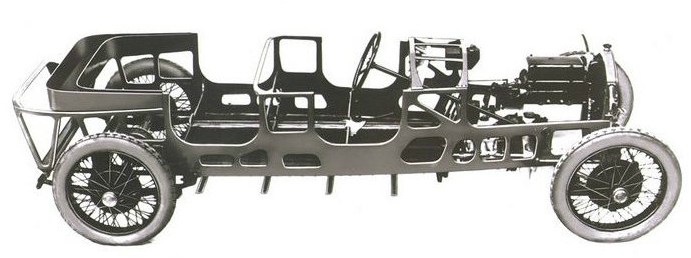 The Lancia Lamda was based around a steel monocoque which eliminated the need for a heavy frame. Most of the body's strength came from the driveshaft tunnel which formed a lightweight backbone for the car. Passengers were seated beside the tunnel allowing for a lower roofline. Typically cars of this period placed all the occupants above the driveshaft which resulted in a high center of balance. In 1922 Lancia introduced the very first monocoque bodied car. That is, the first car that had a body that supported the structural load by using the car's exterior body, rather than an internal frame. The idea of a monocoque was not well received in 1922 even though it is the standard design in Formula One and Indy Car Series racing today. This was primarily because of the use of Carrozzeria. In those early motoring days, you see, when series production did not yet exist, the process of acquiring a new vehicle required two major decisions by a car buyer:
Editor's note: Are you seeing red yet? Quite the soap opera so far eh? We're only in the 1920's! This is part of the reason why the Cortile at the PVGP is a car show about ALL of the Marques of Italy: They are all so very intertwined that it's difficult to appreciate one marque without paying homage to several others at the same time. Keep reading, it gets more interesting... Rosso Red, The Quadrofoglio & Scuderia FerrariWhy Italian Cars are Red In 1904, many national motor clubs banded together to form the Association Internationale des Automobile Clubs Reconnus (AIACR) which is the predecessor to the current FIA governing board which it become known as in 1950. Originally the country colors where: Blue to France, Yellow to Belgium, White to Germany and Red to the USA. Italy “adopted” its famous 'Racing Red' when a red Itala (Itala was a car manufacturer based in Turin, Italy from 1904-1934) won the Peking to Paris race in 1907 but it really wasn’t ‘established’ until the “Rosso Corsa" Alfa Romeo’s began to dominate racing events in the 1920’s. The Quadrifoglio The cloverleaf or “quadrifoglio” has been used on Alfa Romeo cars since 1923. As a friend of Enzo Ferrari, Ugo Sivocci was hired by Alfa Romeo in 1920 to drive in the three-man works team, called "Alfa Corse", with Antonio Ascari and Enzo Ferrari.
Upon Sivocci's death, the quadrifoglio was adopted for all Alfa Romeo racecars. The quadrifoglio emblem 'cloverleaf' has been the symbol of Alfa Romeo racing cars since1923. Since WWII, it has also been used to designate the higher trim models of the range. The quadrifoglio is usually placed on the side panels of the car, above or behind the front wheels—on the front wings in the case of modern vehicle. Editors note: Sivocci’s car number was 17. That number was retired upon his death in 1923 and has not been used by ANY Italian Race team since. Ferrari begins at Alfa Romeo Which brings us back to Alfa Romeo who won the inaugural Grand Prix world championship in 1925 with Enzo Ferrari at the helm of the team.
Scuderia Ferrari In 1929 Ferrari started the Scuderia Ferrari team in order to enter amateur drivers in various races primarily racing Alfa Romeo’s. In 1930 Tazio Nuvolari won the Mille Miglia in an Alfa Romeo 6C. In 1933 Alfa Romeo experienced financial difficulties, and withdrew its in-house team from racing. The Alfa Romeo racing team was privatized and officially named Scuderia Ferrari with team leader Enzo Ferrari at the helm. Few people realize that the DNA for every Ferrari was actually born on Alfa Romeo's payroll. Enzo built a robust racing team from scratch starting in 1929, tapping some of the greatest pre-war drivers in Europe to lead the Scuderia to victory. Editors Note: Ferdinand Porsche once said that Tazio Nuvolari is
In 1937, the Maserati brothers sold their shares of Maserati to Adolfo Orsi, although they continued working for the company as engineers under a 10 year contract. In 1938, Alfa Romeo management made the decision to enter racing under its own name, ere-establishing the Alfa Corse organization, which absorbed what had been Scuderia Ferrari. Enzo Ferrari disagreed with this change in policy and was dismissed by Alfa Romeo in 1939. The terms of his leaving forbade him from motorsport under his own name, for a period of four years. However, Ferrari managed to manufacture two cars, named the AAC Tipo 815’s, for the 1940 Mille Miglia, engineered by Alberto Massimino and driven by Enzo’s old racing partner Antonio Ascari’s son, Alberto Ascari. This name comes up again later… in 1939 and 1940, a Maserati 8CTF won back-to-back wins at the Indianapolis 500, the only Italian manufacturer ever to do so. World War II, however, brought a halt to most racing. postwar: "Italian" & "Racing" become synonymousAfter WWII new key people joined the Maserati team. Alberto Massimino, the Fiat engineer, with both Alfa Romeo and Ferrari experiences oversaw the design of all racing models for the next ten years. The focus was on the best engines and chassis to succeed in car racing. The new projects saw the last contributions of the Maserati brothers, who after their 10-year contract with Orsi expired went on to form O.S.C.A. in 1947. Also in 1947, Ferrari decided to start making cars bearing his name, and founded Ferrari S.p.A.
By 1949 Ilario Bandini was producing his own car and entered Mille Miglia with his new 1100 siluro, featuring torpedo-like bodywork car and used the a Fiat engine, modified with a twin overhead camshaft cylinder head based on an Alfa Romeo design. Carlo Abarth had been sporting director of the Cisitalia factory racing team since 1947. In 1948 begun the financial downfall of Cisitalia, spurred by the investments needed to put the 202 coupé into production; the following year the manufacturer went under. Carlo Abarth took over Cisitalia's assets and in March of 1949 and Abarth & C. was founded. As you can see once again, just a before the war, Italian auto manufacturing was a melting pot and one of the reasons people are often confused about Italian marques. Interestingly, the Cisitalia 202 is featured in the 2011 video game “L.A. Noire” by Rockstar Games and Team Bondi as a secret car called the Cisitalia Coupe. The game resulted in the liquidation of Team Bondi. Iso Autoveicoli S.p.A. was founded in 1953 by Renzo Rivolta with the introduction of the Isetta “bubble car” The Isetta is always a hit when kids see them at the PVGP and “It’s so cute!” is often heard at both the Cortile and the BMW show. The Isetta was designed to be an ‘everyman car more or less in the same spirit of Henry Ford’s Model T, to enable the Europeans get back on their feet after the war and move into the use of cars again and away from motorbikes which had been the defacto form of transport in the immediate post war era. Demand for the Isetta was so great that eventually BMW stepped in and took over production. “Second is the first of the losers.”The mixing and matching of components, teams and drivers in the 1950’s was both confusing, exciting and exactly where the legend of Italian performance took it’s grip on the asphalt and has not let go since. In 1950 Nino Farina won the first Driver’s Championship in an Alfa Romeo. In 1951 Alfa Romeo won again with pilot Juan Manuel Fangio. By 1952, facing increased competition from their former employee, Ferrari, Alfa Romeo, by then a state-owned company, decided to withdraw after a refusal of the Italian government to fund the expensive design of a new car. In 1952 Alberto Ascari gave Ferrari its first Drivers Championship and then again in 1953. Ascari drove for Ferrari, Lancia and Maserati for the 1954 campaign. Ascari won the Mille Miglia driving a Lancia sportscar.
Enzo Ferrari is famously quoted: “Second is the first of the losers.” Being first in racing was everything for him and he dominated the 1950’s in World Sportscar Championship winning in 1953, 1954, 1956, 1957, 1958, 1960 and 1961 but Maserati was always close at hand, especially in 1956 with a Maserati 300S driven by Stirling Moss. Notably, 1957 marked the year that Argentine-born Alejandro de Tomaso made his Formula One debut as a driver. That becomes rather important later in our story as de Tomaso became the owner of Maserati and many other iconic marques in the 1970's. But, again, we're getting ahead of ourselves in the story.... After 1957, Maserati began focusing on building road cars due to financial difficulties. Some have said it was the Italian passion for the racing business that drove up the performance innovation of not only Italian cars but all automotive manufacturers in this period. Alas, it may also have been the focus on the racing business that took the focus off of selling consumer cars, and, by the 1960’s, many Italian Marques where experiencing lots of "financial difficulty." Racing, they say, can make you a millionaire… if you start out as a billionaire. Consolidation & ExpansionIn 1959 Alejandro de Tomaso founded De Tomaso Modena SpA . 1961 marked the year that Alfa Romeo started importing cars to the United States. Meanwhile at ISO, after the success of the Isetta bubble car, and together with engineer Giotto Bizzarrini, and chassis builder Bertone, Renzo Rivolta began developing the Iso Rivolta in 1962 and moved ISO into the “GT/Gran Turismo” (Grand Touring) & performance sports car manufacturer category. Editors Note; In October of 1963 the Ferrari Club of America was started, partially from the influence of Jack Katzen of Philadelphia and included as a club founder, Dick Merritt, who later raced in the inaugural Pittsburgh Vintage Grand Prix in 1983 with his 1959 Ferrari 246 Dino. 1964 marked the founding of by Bizzarrini S.p.A. by former Alfa Romeo, Ferrari and ISO engineer, Giotto Bizzarrini. The company built a small number of highly developed and advanced sport and racing automobiles. [Be sure to click on the Bizzarrini link for more of the story] Fiat Powered Although race cars did not bear the name Fiat on the their grill in the postwar period, Fiat became the power plant of choice for many companies. An alliance with Fiat was crucial to the success for many of the iconic racing names. Since it’s founding, Fiat had expanded manufacturing into farm equipment, marine engines and even airplanes while at the same time supporting many many of the Italian marques who's focus was on racing and performance....
During the 1960s and 1970s, Former F1 driver, de Tomaso acquired Ghia and Vignale coachbuilding studios, and gained control of the Benelli and Moto Guzzi motorcycle firms, the Innocenti car company, and, in 1975, the celebrated sports car maker Maserati, which de Tomaso rescued from bankruptcy. de Tomaso originally produced various prototypes and racing cars, including a Formula One car for Frank Williams' team in 1970 as well as the famous Pantera and Longchamp. The legend of LamborghiniAutomobili Lamborghini was founded in 1963 by manufacturing magnate Ferruccio Lamborghini. A former mechanic during World War II, Lamborghini started a tractor business, Lamborghini Trattori, in 1948, using leftover military hardware. By 1955, his tractor company was one of Italy's largest farming equipment manufacturers. Finding himself in a position to indulge his passion for luxury cars, Lamborghini began buying Alfa Romeos, Lancias, Maseratis, and Ferrari’s. Lamborghini thought Ferrari's cars were good, but too noisy and rough to be proper road cars. Most annoyingly, Lamborghini found that Ferrari's cars were equipped with inferior clutches, and he was continuously forced to return to Maranello for clutch rebuilds. Ferrari technicians would take the car away for several hours to make the repairs, not allowing the curious Lamborghini to view the work. Frustrated with the recurring nature of the problems, during one particularly long wait, he took the matter up with the company's founder, "Il Commendatore", Enzo Ferrari. What happened next has become the stuff of legend: Ferruccio complained to Enzo in "a bit of an argument", telling him that his cars were rubbish; the notoriously pride-filled Modenan was furious, telling the manufacturing tycoon, "Lamborghini, you may be able to drive a tractor, but you will never be able to handle a Ferrari properly. You stick to building tractors and I will stick to building sports cars.” Enzo Ferrari's snubbing of Lamborghini had profound consequences. Lamborghini later said that it was at that point that he got the idea that if Enzo Ferrari, or anyone else, could not build him a perfect car, he might be able to simply make such a car himself. An the birth of the Lamborghini Bulls began. Rally LegendsIn 1971 the Fiat 124 Sport Spider was prepared for Rally Competition when Abarth became involved with its production and development. From 1972 on they had relative success with wins in 1972, 1973 and 1974. The Fiat 131 Abarth was a very successful rally car replacing the 124. Between 1976 and 1981 Fiat Abarth won 18 World Rally Championship events, and won the WRC three times: in 1977, 1978, and in 1980. Notably in 1973, De Tomaso also purchased Italian motorcycle company Moto Guzzi.
The Lancia Delta is the most successful individual model designation ever to compete in rallying. All this gave Lancia a total of 11 Championships over the years. Lancia took over the role of motorsport for the Fiat Group during the 1980s. In 1988 Lancia was the Marque of the Year at the Pittsburgh Vintage Grand Prix. “I have no interest in life outside racing cars.”In 1972, Al Garthwaite, of Algar Ferrari of Philadelphia fame, and Luigi Chinetti partnered to create an automobile importing company in the United States which was fundamental in giving birth to the East Coast American Ferrari Dealer Network. Establishing retailers from the Atlantic coast to the Mississippi River and through the lower half of Texas, the Chinetti-Garthwaite enterprise imported over 1600 Ferraris to this network through a distribution facility in Paoli, Pennsylvania. Enzo Ferrari was once quoted as saying “I have yet to meet anyone quite so stubborn as myself and animated by this overpowering passion that leaves me no time for thought or anything else. I have, in fact, no interest in life outside racing cars.” However, to fund the racing cars, Enzo needed to sell cars and the Chinetti-Garthwaite enterprise SOLD cars. In fact, many have said that the sales of the cars in North America funded the technical developments in Ferrari F1 cars in the 1970’s and led to the success Ferrari in F1 with Niki Lauda piloting in in 1975 and 1977 and Jody Scheckter in 1979. We are very honored at the Pittsburgh Vintage Grand Prix Cortile to welcome Algar Ferrari as one of our sponsors of the Marques of Italy in 2015 and Tom Frasca, who was Luigi Chinetti's personal secretary for over 30 years as one of our Cortile Cup Judges. Marques of Italy
With the loss of new Italian cars being exported to the United Stated, interest waned for several years in the United States with the exception of the Italian car aficionados. 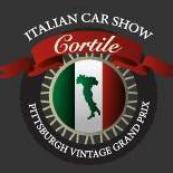 By 2007 a group of Italian Car enthusiasts prompted the Pittsburgh Vintage Grand Prix to showcase as Marque of the Year “All Italian Cars” . This included Marque of the Year Chairman, Bernard Martin, and Pam Martin, Chad Pcsoyler Ian Martin. The celebration in 2008 was so well received that the following year saw the founding of the Cortile Italian Car Show at the PVGP. Word must have gotten out about the resurgence of Interest in Italian cars because in June of 2009, Fiat Group and Chrysler Group LLC formed a strategic alliance. Consequently, Fiat has become the sixth largest car manufacturer in the world and it foretold the return of Italian marques Fiat and Alfa Romeo again being exported to North America. The Proiettore Macchina concept was introduced a the second year of the Cortile in 2010. Proiettore, in Italian, is the word for headlight. "Headlight" encapsulates our goal for Proiettore Macchina which is to shed light on the robust history of Italian motorsports and motorcars.
The Pittsburgh Vintage Grand Prix, presented by the Greater Pittsburgh Automobile Dealers Foundation, has a mission is to produce a world-class vintage racing event in order to raise funds that help provide residential care, treatment and support individuals with autism and intellectual and developmental disabilities in the Pittsburgh region through the Autism Society of Pittsburgh and Allegheny Valley School. Both of these charities play a key role in our success, supplying volunteers at all of our events.
edited and translated by Bernard Martin On June 17, 1923 Enzo Ferrari had the first of his few victories as a racing driver. In total there would be nine, over a racing career that lasted until 1931. That day, June 17, 1923, is linked to an episode that would play a decisive role in Ferrari’s passage from story to legend. Meanwhile, Giulio Ramponi, his mechanic who had accompanied him in the car, hurried him: "Come on, we must go back home...". That distinguished gentleman was none other but Count Enrico Baracca. His son Francesco, had become a legend in rural Italy at the turn of the century. He was Italy's top fighter pilot of World War I and was credited with 34 aerial victories qualifying him as a Fighter Ace . Francesco Baracca was shot down on June 19, 1918 in his Spad VII. in the clouds above Montello.
It was she who gave Ferrari the symbol which would forever be associated with the activity of the entrepreneur from Modena: The Cavalllino Rampante, which would affectionately be know by tifosi as the "Prancing Stallion". According to Ferrari, in 1923, when I won a race at the Savio track in Ravenna, Mrs. Baracca told me “Put this on your cars, the prancing stallion of my son. It will bring you luck." Surely, even more than the mother of Francesco Baracca could imagine. "The Horse" Ferrari wrote in his memoirs, "was and has remained black. I added the canary yellow background, which is the color of Modena." Interestingly, only nine years after the chance meeting at the victory of the Circuit of Savio, the prancing horse would make his first appearance on the Enzo’s cars. The "debut" took place in Belgium, more precisely in Spa, where on July 10, 1932 was a 24 Hour race. The emblem was stuck on the hood of the 8-cylinder Alfa Romeo 2300 MM. And the rest, as they say, is history. But alas, there's more... The cavallino rampante ties to PorsChe & Stuttgart There is still a bit more backstory that establishes prancing stallion's origins in Germany. The prancing stallion is the symbol of the city of Stuttgart. During the First World War, in an aerial duel, Francesco Baracca shot down an aircraft manufactured in Germany. Upon winning the aerial duel, Baracca landed near the wreckage and recover a piece of the enemy aircraft. The planes where all covered in canvas to cutting a piece off was rather simple. Baracca would keep the badge attached to his plane’s fuselage, made in a factory in Stuttgart. This was quite commonplace behavior for fighter pilots of the era: It was a practice among aviators to recover, if possible, something that would confirm the results of their dogfight battle in the skies. Baracca would make it his own good-luck token. And after his death the prancing horse would be sent to his parents. From them it passed into the hands of Enzo. As a side note, Stuttgart is a modified version of Stutengarten which is an ancient german word for "Gestüt", translated into english as mare garden or stud farm, into Italian as "scuderia". Portions of this article originally posted at: http://www.webalice.it/g.sivocci/biografia-it-en.html
The 2015 Amelia Island Concours d'Elegance held March 13-15 featured a unique gathering of 26 cars that where all raced by Sir Stirling Moss. The Italian contingent included the a select group of Moss's racing cars including Ferrari's, a 250 GTO, a 250 GT Speciale ‘Sperimantale’, a 250 TRi/61 and 290 MM and the trident badged Maserati's including a 250F, a 300S, a 450S and a Tipo 61 Birdcage. 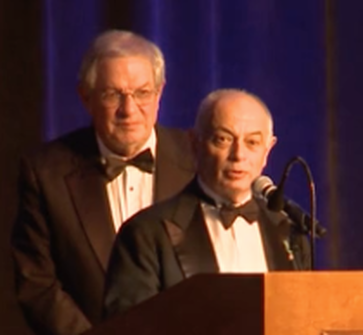 Amongst the many cars on display where portions of the Auriana Collection that was featured both as part of the Alfa Romeo corporate display as well as rolling around the showfield turning heads and eliciting admiring whistles. Lawrence Auriana, is a successful businessman and very well-regarded in the historic racing community. Professionally, Auriana is a Senior Portfolio Manager and founder of the Federated Kaufmann Fund, part of Federated Investors based in Pittsburgh. Auriana has also been President, Chairman of the Board and Treasurer of the Columbus Citizens Foundation which celebrates Italian-American Heritage. The organization produces New York’s annual Columbus Day Parade as part of the Columbus Week Celebration which is the world’s largest series of events that pays homage to Italian-American friendship, cooperation and culture. "My collection is a tribute to the contribution of Italy to the automotive industry. It's much more than the red cars from Marenello. It's the red cars from Modena, the red cars from Milano, Torino. It's Abarth, Moretti, Stanguillini... My cars are a tribute to a group of Italians that made an important contribution to the automotive industry in the 20th century. The Great designers, engineers, and sportsmen who raced these cars and we hope to share those cars with all of you" Needless to say, Larry Auriana's words capture the essence of the upcoming Marques of Italy celebration at the 2015 Pittsburgh Vintage Grand Prix and the very essence of the spirit in which was the Cortile Italian Car show's inception. Drool with us now as you read some of the unique bio's of a small part of the Aurianna Collection below that was on display at Amelia Island. Auriana is a well-known and respected collector of classic cars and motorcycles and the owner of a successful historic racing team, Fratelli Auriana Racing. His collection celebrates the superior design of the Italian Automotive Industry. His cars have won a list awards around the world that is so prestigious and long that listing them could take up this entire article. Perhaps one of the most recent and important awards is the Lee Iacocca Award he won at 2014 Amelia Concours d'Elegance. The Lee Iacocca Award was established to recognize outstanding classic car enthusiasts and is given for "Dedication To Excellence In Perpetuating An American Automotive Tradition". The award celebrates auto enthusiasts on multiple levels, including character, community involvement, integrity and a level of excellent presentation of their vehicle. Larry Auriana certainly embodies all of that. According to Auriana, 1933 Alfa Romeo 8C 2300 Monza Spider CorsaThe Alfa Monza, owned by Auriana , is believed to be the model raced by Tazio Nuvolari in his winning bid in the 1932 Monaco Grand Prix. It later was entered in the 1933 Monaco Grand Prix and French Grand Prix and, in 1934, placed second in the British Empire Trophy Race, when it was driven by Charles Brackenbury. Chassis 2211125, 2,556cc inline 8-cylinder, 178hp, supercharged DOHC, 4-speed manual transmission, 4-wheel drum brakes. This 8C 2300 2.6-liter Monza Corsa Spider was delivered to Tim Birkin on April 19, 1933, just days before the 1933 Monaco GP. It is known that Tazio Nuvolari drove an undocumented new Monza to a spectacular victory in Monaco that year, many believe this is the car he drove, but no direct connection with 2211125 has ever been proven or disproven. It did race in June 1933 at the GP de Frontieres at Chimay, driven by Clifton Penn Hughes where it finished second, then a week later driven by Captain George Eyston in the French GP at Montlhéry with a respectable third place. It was sold and shipped to England and continued racing throughout the mid 30’s. In 1937 it was sold to American Sam Bird, who kept the car in England until the end WWII. After arriving in the U.S., Bird ‘s nephew George Huntoon returned the Monza to competition, entering and winning the inaugural 1949 road race at Bridgehampton, Long Island. It also ran in the 1949 race at Watkins Glen, leading from the start but eventually suffering damage and retiring. Huntoon sold the car in 1953 to Art Roberts who in turn sold it in June 1955 to Norman Andrews, a Sunman, Indiana egg farmer, for $2,100 complete with 13 wheels and tires, the original distributor, a magneto, Monza exhaust header. 2211125 lay unused until 1968 when Andrews sold it to Arthur Jacobs in Mineola, Long Island. A decade later in 1978, it was acquired by Paul Grist, who began a comprehensive restoration that emerged mechanically fresh, but with a gently aged patina. It was sold in 1991 to the late Terry Cohn, a consistent competitor and participant in historic events around the world. Auriana bought the car in 2002 and it participated in the 2007 Mille Miglia with co-drivers Italian Navy Admiral Giovanni Vitaloni and Joseph Colasacco. From 1931 through 1937, Alfa Romeo Monza sports cars dominated road racing. The 8c 2300 featured a 2300 cc in-line eight-cylinder engine and was designed by Vittorio Jano and was crowned a supreme feat of engineering by the foremost drivers of the day — Nuvolari, Borzacchini, Varzi, Campari, Brivio and Trossi — all of whom raced the Monza. The Alfa Romeo 8c 2300 acquired the "Monza" designation after Nuvolari drove the car to his 1932 Italian Grand Prix win in a race in Monza, Italy. Only a handful of the Alfa Romeo 8C 2300 sports cars are known to have survived the gruelling demands of road racing in the mid-20th century. They are among the most highly sought after cars in the world. 1953 Alfa Romeo 6C 3000 CM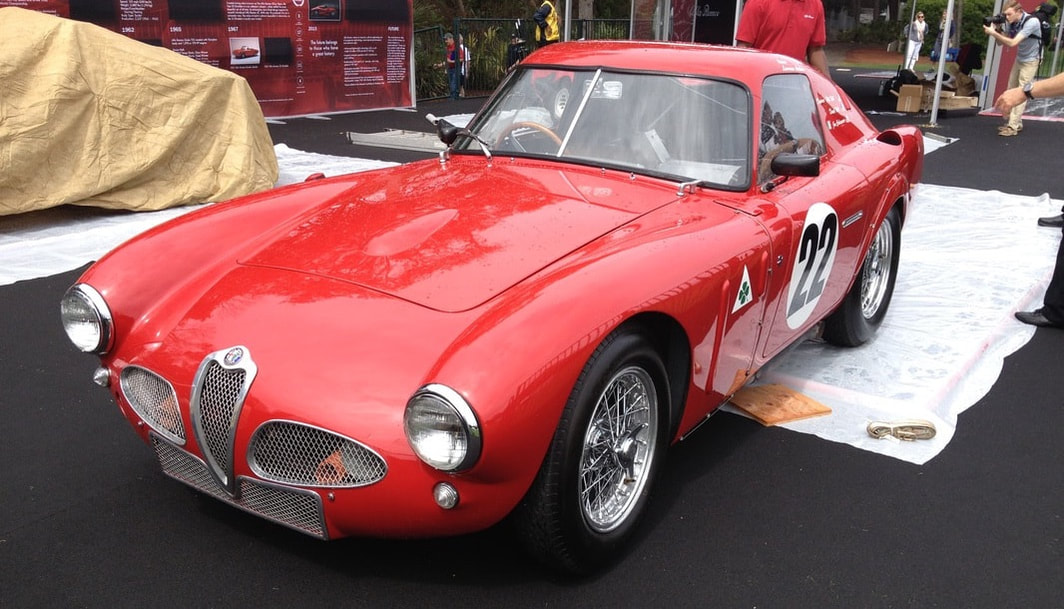 1953 ALFA ROMEO 6C 3000 CM. Chassis 00126, 3495cc inline six-cylinder, 275hp @ 6500 rpm, aluminum body over steel tubular frame chassis. First raced by Juan Manuel Fangio at the 24 Hours of Le Mans in 1953, this Alfa Romeo 3000 CM has had a very thrilling life. Designed for road and track racing, this rare Alfa Romeo was engineered for the 1953 Sport Cars World Championship and namely to take part to the Mille Miglia and 24 Hours of Le Mans races. It is one in a series of six cars first built by Alfa Romeo that year. Four were berlinettas (coupes) and two spiders, all originally made by Carrozzeria Colli. In the spring of 1955 the Alfa Romeo factory received a somewhat special order. It came from the Argentine presidential palace, the President would like to have a special version of Alfa’s 6C 3000. Well, a stock of 6C cars at the factory wasn’t exactly available, so you had to find a donor car. One of the factory’s engineers, Giuseppe Busso, got the job. From Alfa’s stock he found a donor car with chassis no. AR * 1361.00126. This was a Berlinetta, with a body of Colli. The car had driven 24 hours of Le Mans in 1953, in fact the last time Alfa Romeo officially participated in the race. The driver at the time was none other than Juan Manuel Fangio, another Argentine connection to the car. Allegedly, Fangio had later damaged the car violently. Busso had to remove the body and begin a major restoration work on the chassis. Then it was transferred to Mario Boano, whom would create a new body on his carozzaria Boano. At least four of those racecars were subsequently re-bodied by famous coachbuilders. Boano re-bodied this car in 1954 and one year later, in 1955, Alfa Romeo presented the new sport car to General Juan Peron, president of Argentina. In August 1970, noted Alfa Romeo collector H.W. Wessells brought the 6C 3000 CM back to life was when he bought it from Ed Bond of the Vintage Car Store in Nyack, NY. The second revival started after Wessells totaled the Boano Berlinetta racing it in the 1984 Pittsburgh Vintage Grand Prix. He decided to restore the CM in Italy with Salvatore Diomante of Autocostruzioni S.D. at Nichelino who returned to its original Colli Coupe body design. This car was called “Tipo 6C 3000 CM” where CM does not stand for Campionato del Mondo, nor for Competizione Maggiorata, nor Corte Maggiore but stands for “Cilindrata Maggiorata” because of its increased (maggiorata) displacement (cilindrata). Mr. Wessells sold this car to current owner, an Italian car collector for whom both the late Phil Hill, son Derek Hill and Joe Colasacco have driven at Monaco, Le Mans, Goodwood and Monterey. 1968 Alfa Romeo Tipo 33/2 Stradale The Alfa Romeo Tipo 33 Stradale is arguably one of the most beautiful cars ever made and one of the rarest too, since the Italian carmaker only built 18 road-going versions of the Tipo 33 racer. Of these, fewer than 10 are known to exist today. The car takes 5.5 seconds to reach 60 mph (96.6 km/h) from a standing start and has a top speed of 260 km/h (160 mph). In 1968 it was the fastest commercially available car in the standing kilometer with time of 24.0 seconds measured by German Auto, Motor und Sport magazine. Similar performance cars on that time were all using twice the Stradale`s cylinder capacity, the Lamborghini Miura, Ferrari Daytona and Maserati Ghibli. 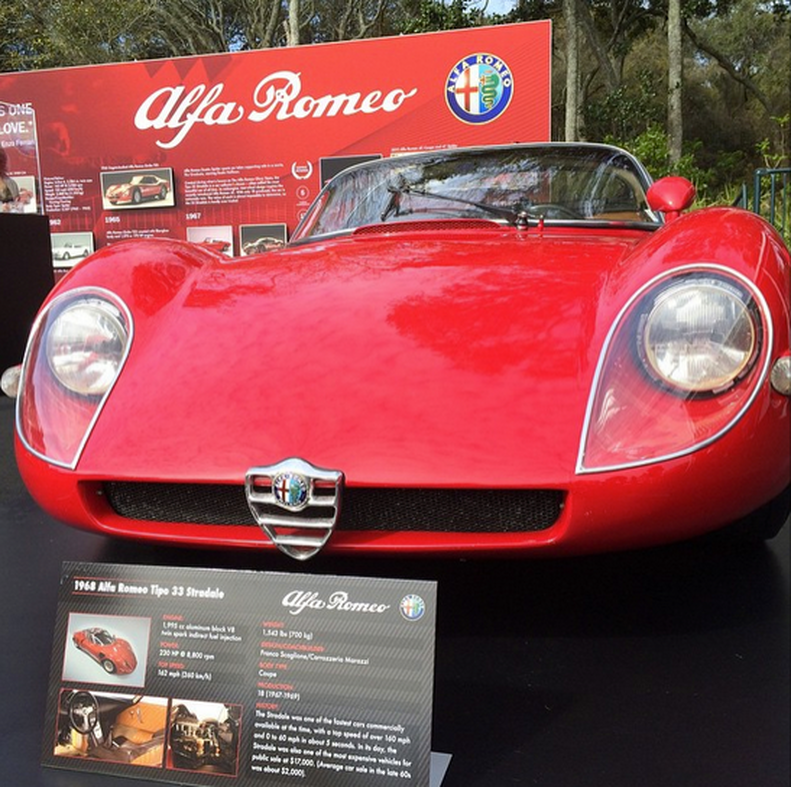 Hidden in the trailer is one of the sexiest front profiles ever. Elegantly formed wings are filled with teardrop headlight cowls, the chrome applied like a Vogue cover girl’s eyeliner. The delicate Alfa shield sits proudly on an aggressive, narrow grille. Rarely are power and beauty melded so masterfully.” Mick Walsh, Classic & Sportscar magazine, January 1999 Chassis 75033.133, 1995cc V8, 230bhp @ 8800rpm Designed by Franco Scaglione and built by Carrozeria Marazzi this spectacular car was based on the Autodelta T33 racecar at the request of the director of Autodelta, Carlo Chiti. Dubbed the Alfa Romeo 33 “Stradale” (road-going), it was first shown at the Sports Car Show in Monza in September of 1967. Built in an attempt by Alfa to make some of its racing technology available to the public, it was the most expensive automobile for sale to the public in 1968 at US$17,000. The 33 Stradale is the first production vehicle to feature dihedral doors, also known as butterfly doors. The 33 Stradale also features windows, which seamlessly curve upward into the 'roof' of the vehicle. The car has aluminum body on aluminum tubular chassis. As a result of being built by hand, each model differs from the others for some details. For example, early models had twin headlights, replaced in the last ones by single lights. The position of the windscreen wiper, and even the number of them, is another thing that differentiates each example from the others. Also the late models have vents added behind both the front and rear wheels to allow hot air from the brakes to escape. “In those days there was no speed limit in Italy and the police only stopped you out of curiosity. More often they would gesture you on: “Avanti, Avanti.” Once, on the autostrada to Venice, I ran it for 4km at its 10,000rpm rev limit in sixth. I clocked it at 180mph. Amazingly, below 150mph there was little engine noise, but past 160 it became really intense inside. The car was fantastically stable- even in crosswinds it still ran brilliantly straight.” Henry Wessells II, American motoring connoisseur and first private owner of a Stradale. The race-bred engine bore no relation to the mass-produced units in Alfa's more mainstream vehicles. The engine is closely related to the V8 of the Alfa Montreal, albeit with smaller capacity and in a much higher state of tune. Both engines were derived from the 33 racers‘ but differed in many details. Both engines had chain driven camshafts as opposed to the racers‘ gear driven ones, but the Stradale kept the racing engine’s flat plane crankshaft, whereas the Montreal engine had a cross plane crank. Race engineer Carlo Chiti designed an oversquare (78 mm (3.1 in) bore x 52.2 mm (2.1 in) stroke) dry-sump lubricated all aluminum 1,995 cc (121.7 cu in) V8 that featured SPICA fuel injection, four ignition coils and 16 spark plugs. The engine used four chain-driven camshafts to operate the valve train and had a rev-limit of 10,000 rpm. The engine produced 230 hp (172 kW) at 8,800 rpm in road trim and 270 bhp (201 kW) in race trim. The engine valves are operated via chain-driven double-overhead cams and has a 10.5:1 compression ratio. Because every Stradale is hand built and unique the power levels can vary by car, used rpms etc., for example the first production Stradale (No. 750.33.101) has factory datasheet that claims 243 hp (181 kW) at 9,400 rpm with a "street" exhaust and 254 hp (189 kW) with open exhaust In another break from convention Alfa used, for the first time on a production car, a six-speed transaxle gearbox by Valerio Colotti. The car has 13-inch Campagnolo-made magnesium wheels and Girling disc brakes on all four corners, the rear ones are inboard type. Despite the wheel diameter being just 13 inches the wheels are eight and nine inches wide, front and rear. Suspension is like in mid-1960s race car with upper and lower control arms in front and double trailing arms in the rear, along with substantial antiroll bars. Mr Auriana drove a 1972 Tipo 33/TT/3 In the 1972 Daytona Race Maserati 250FFangio had demonstrated that the Lancia-Ferrari D50 was the car to beat at the 1956 German Grand Prix, where Stirling Moss had qualified in fourth place behind the Italian cars in a Maserati 250F, going onto finish in second place in the race behind the great Argentinian. For the Italian Grand Prix, in much the same way that modern Formula 1 teams revise and update cars between races, Maserati produced a car that had been revised considerably. Stirling recalled that Maserati “would have to pull something pretty dramatic out of the bag for Monza” and they did. Two new 250F chassis were built, one for Stirling and one for Jean Behra, with off-set prop-shafts, which allowed the driving position, and therefore the centre of gravity, to be considerably lowered, thus improving the handling. Despite a good start by Stirling, the Lancia-Ferraris quickly asserted themselves in the first four places, although, happily for him, this turned out to be short lived. On the fifth lap of the 50 lap race, both Castellotti and Musso paid the price for pushing too hard too soon and their rear tyres started throwing treads. In a scene reminiscent of the current 2011 season both the Lancia-Ferrari drivers pitted for new tyres. This left Stirling in the lead from Schell, Collins and Fangio who had dropped back in his Lancia-Ferrari to this chasing group. “We became locked in quite a battle and with 15 laps gone I was only 0.6 seconds ahead of Harry” Stirling recalls. With 5 laps to go Stirling ran out of fuel. Stirling recalls “I spotted (Luigi) Piotti, the Italian Maserati privateer, coming up behind and gestured frantically for him to use his car to push me to the pits”. Luckily for Stirling he understood and the Maserati’s proceeded to the pits nose to tail, with Stirling’s 250F receiving what would be in modern terms, a splash and dash. Coming out of the pits he went on to record the a fastest lap of the race in a time of 2m 45.4s at a speed of 135.5mph in an effort to catch Musso's Lancia-Ferrari. Stirling's mechanics then had to signal to him to slow down as they could see patches of canvas appearing on his tyres. With 3 laps to go, fate intervened yet again and the Lancia-Ferrari driver suffered a broken steering arm as the car came off the final banking, coming to a stop sideways and out of control by the pits. Stirling was ahead yet again, on tyres that were down to the canvas casings, depsite this, he went onto win the race by six seconds from a fast closing Fangio in a time of 2 hours 23 minutes 41.3 seconds, at an average speed 129.73mph. Fangio’s second place, gave Stirling's former team mate yet another World Drivers’ Championship. For Stirling, winning at Monza in an Italian car made up for loosing the 1954 race in the Mercedes streamliner, it also meant a great deal to the “tifosi”, the passionate Italian fans, who rightly viewed this victory as one of Stirling’s finest to date.
For 2015 the PVGP is Celebrating the Marques of Italy. Italian cars of all manufacturers will be honored throughout the entire 10-day event including an All Italian Marque Race on the final day – Sunday July 19 at Schenley Park. We are told that this will be the FIRST EVER all- Italian Marque race ever held in North America.
Cortile Lunch Saturday, July 18 All Italian race cars are invited to drive up to the Italian Cortile at the Pittsburgh Golf Club on the golf course for lunch on Saturday. There will be 300-400 Italian show cars displayed on the 18th fairway. Joe Parlanti will lead the cars through the city streets, departing the Italian Paddock at 11:15 am. Details on Cortile – Saturday Eligible Cars Qualified Italian cars of all marques manufactured before 1973 are eligible. See our Approved Car List for specifics. We already have commitments from several racers and we’re looking forward to featuring 20-25 cars. If you believe your Italian car is eligible and can not find it on our list please email Alain Raymond. Contact
Alain Raymond is a long time supporter of the PVGP and a familiar smiling face throughout vintage racing. He has volunteered to help recruit and manage our Marque of the Year race. If you have any questions regarding the Italian Marque or any aspect of our races please email Alain Raymond Entry Form To enter the Marque of the Year Race you will need to register for our race and add an additional $50 to particpate in the Marque of the Year race. Your grid position will be determined by your best time on Saturday afternoon. |
AtributionThis is a compilation of articles from a variety of sources and contributors. Attrition and sources are always provided at the top and/or the bottom of the posting. Archives
August 2023
Categories
All
|
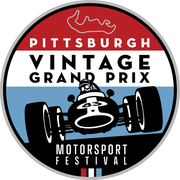
The Pittsburgh Vintage Grand Prix Association is a federally registered 501c (3) non-profit organization with a mission to hold a world-class vintage automotive race event for charity.
Since 1983 this volunteer-driven event has raised over $6 million to benefit autistic and developmentally disabled individuals through the Autism Society of Pittsburgh and Allegheny Valley School. The Pittsburgh Vintage Grand Prix remains North America's largest vintage race event, the only one run on city streets, and the 8th largest car show in the World. |

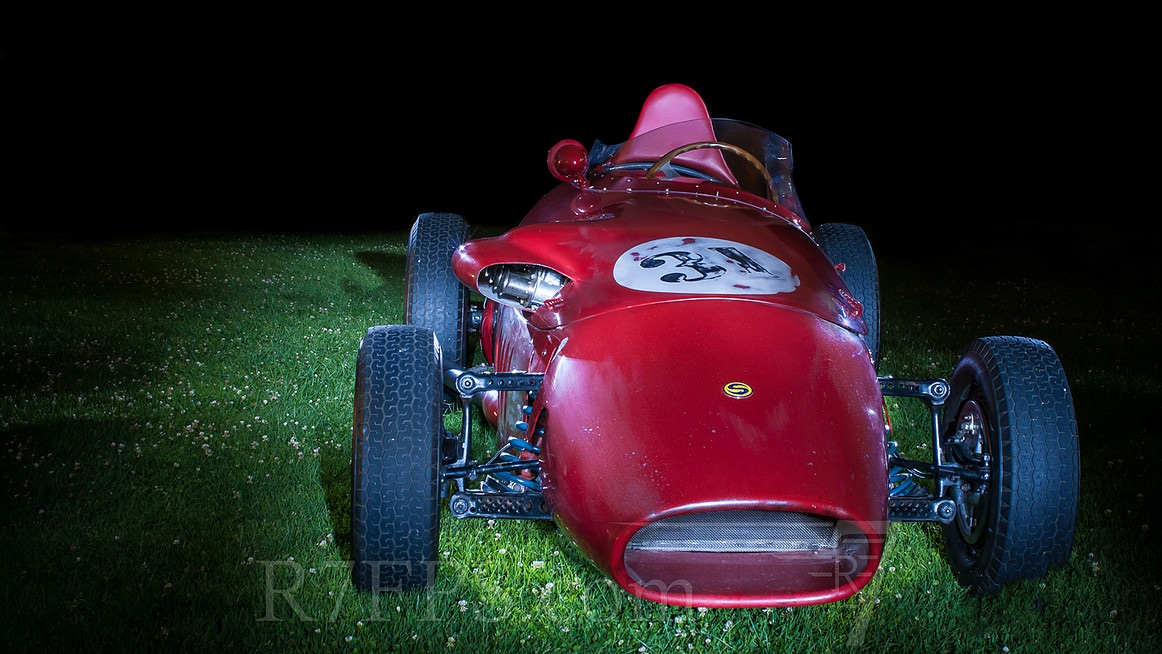
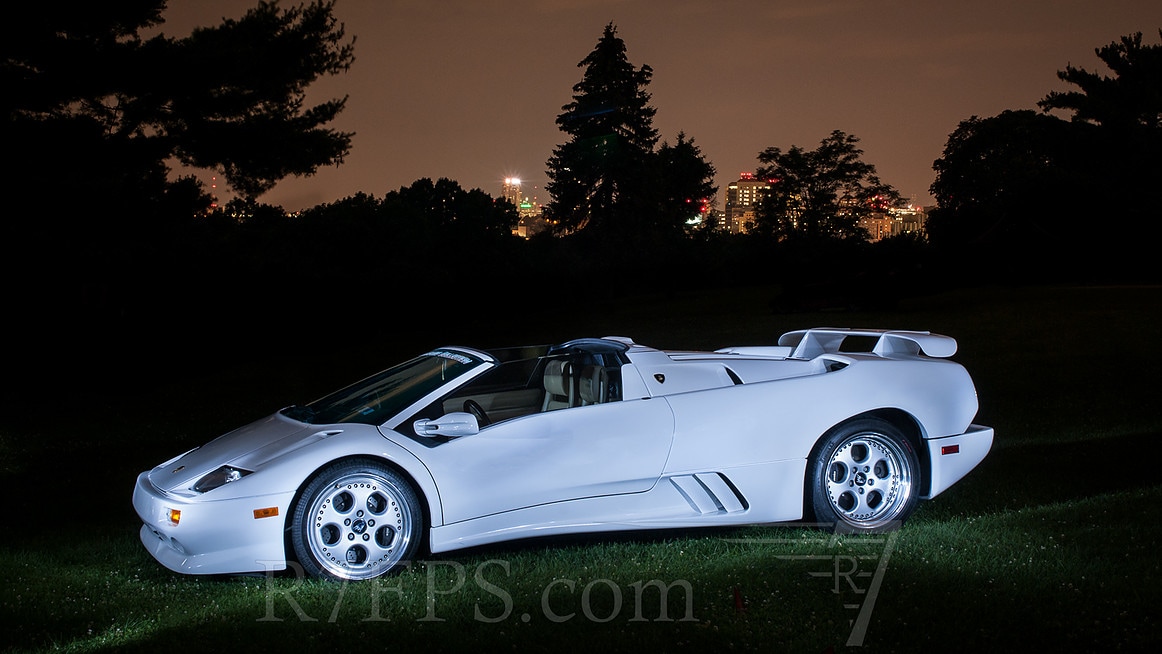
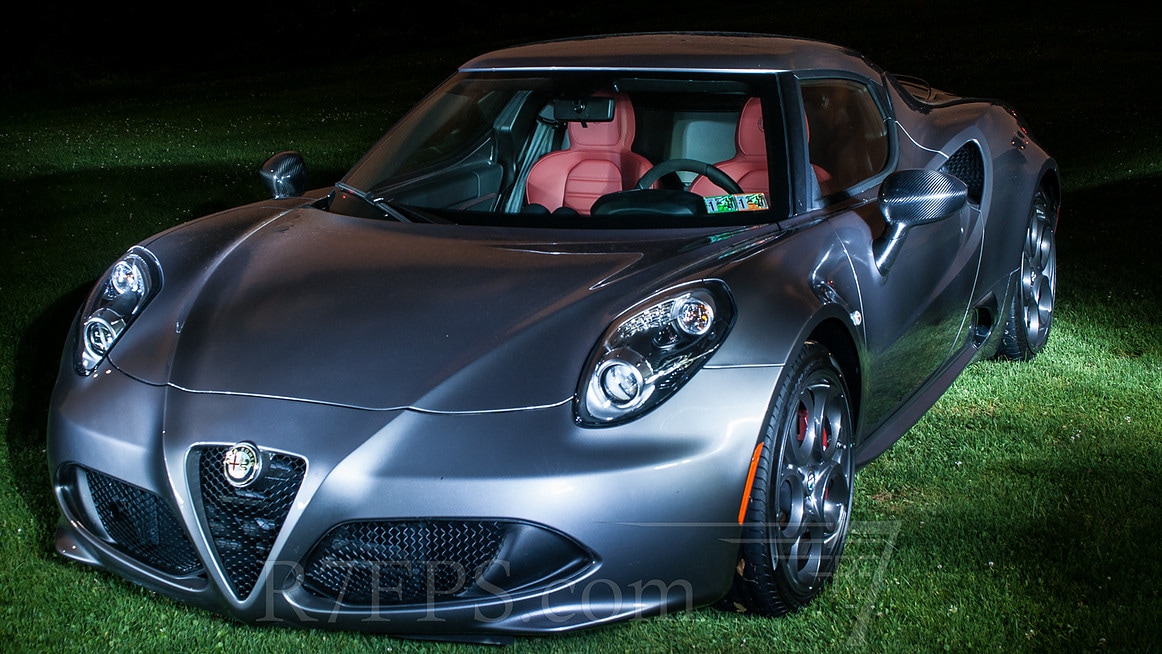
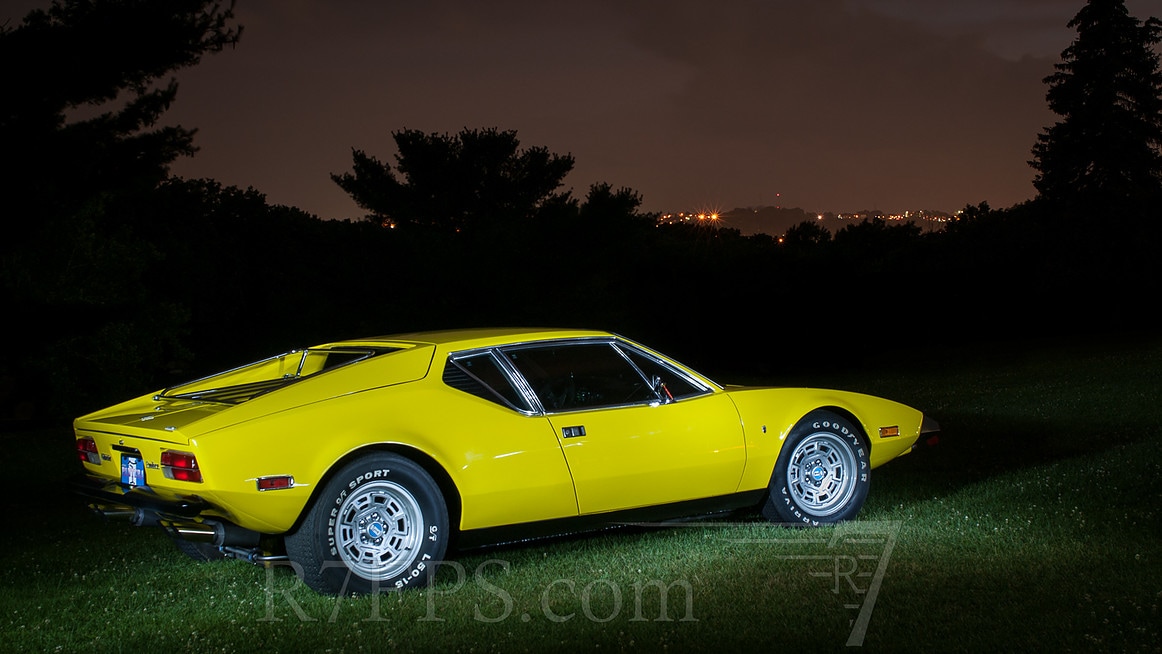
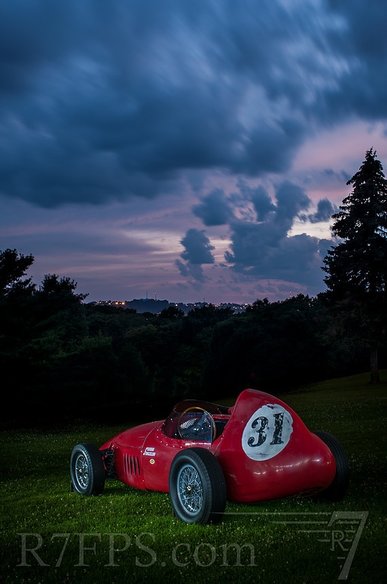
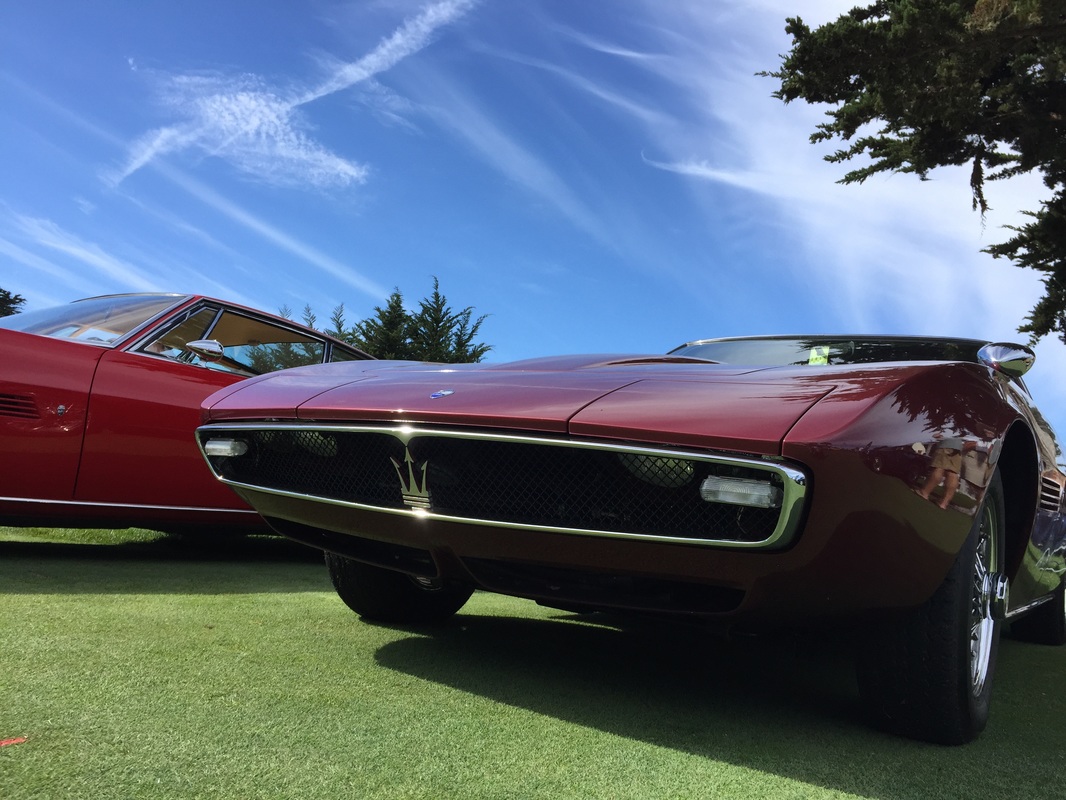
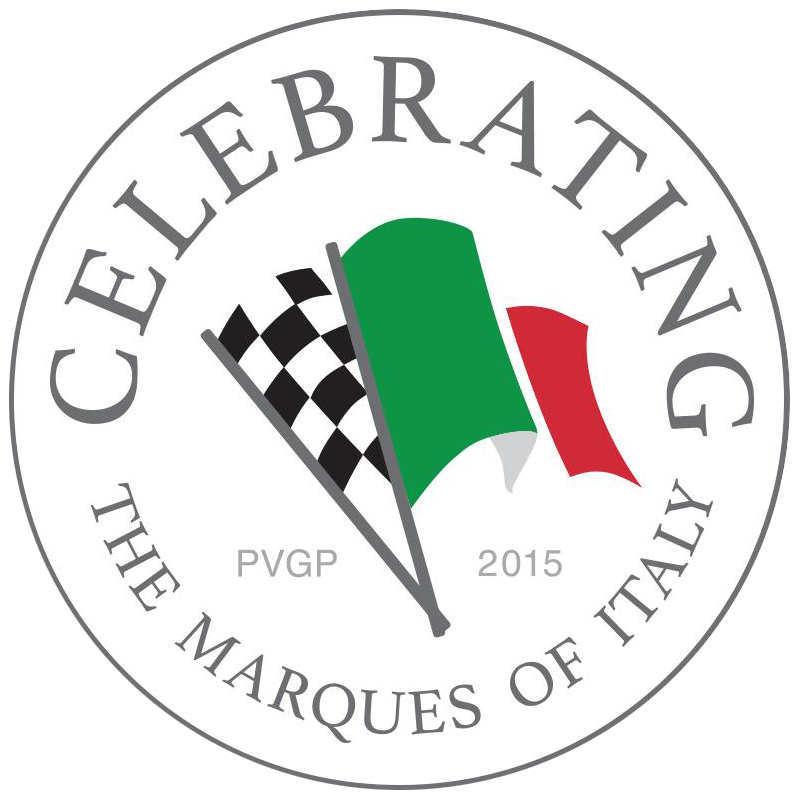
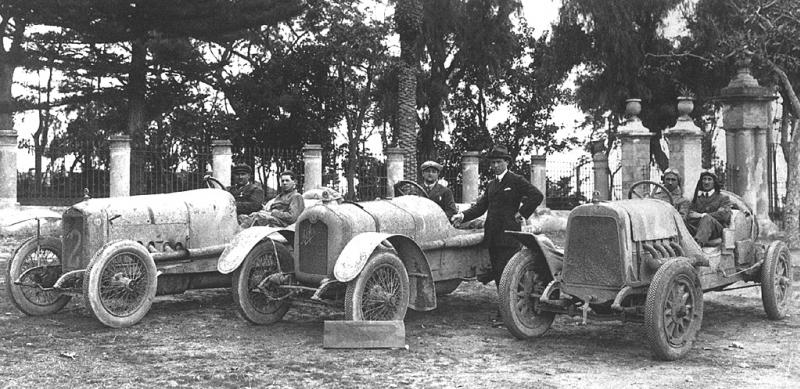
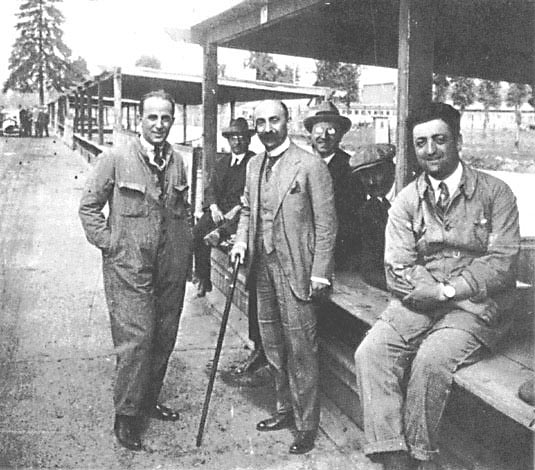
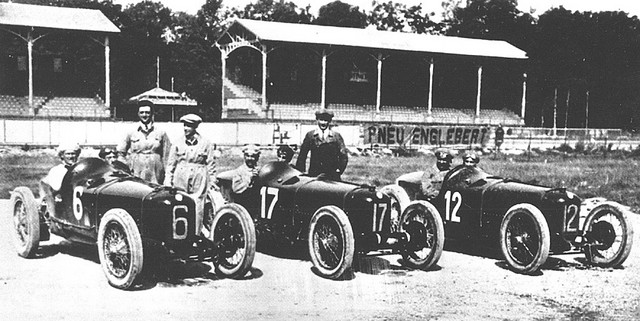
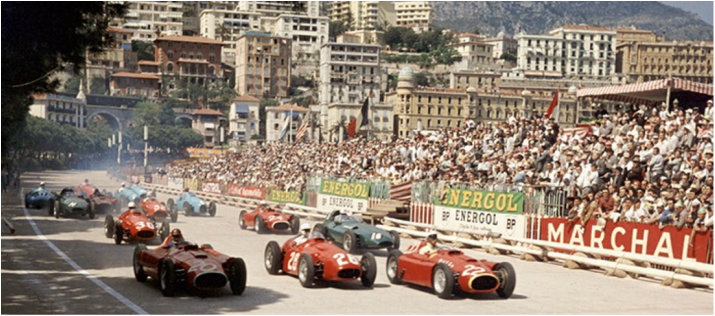
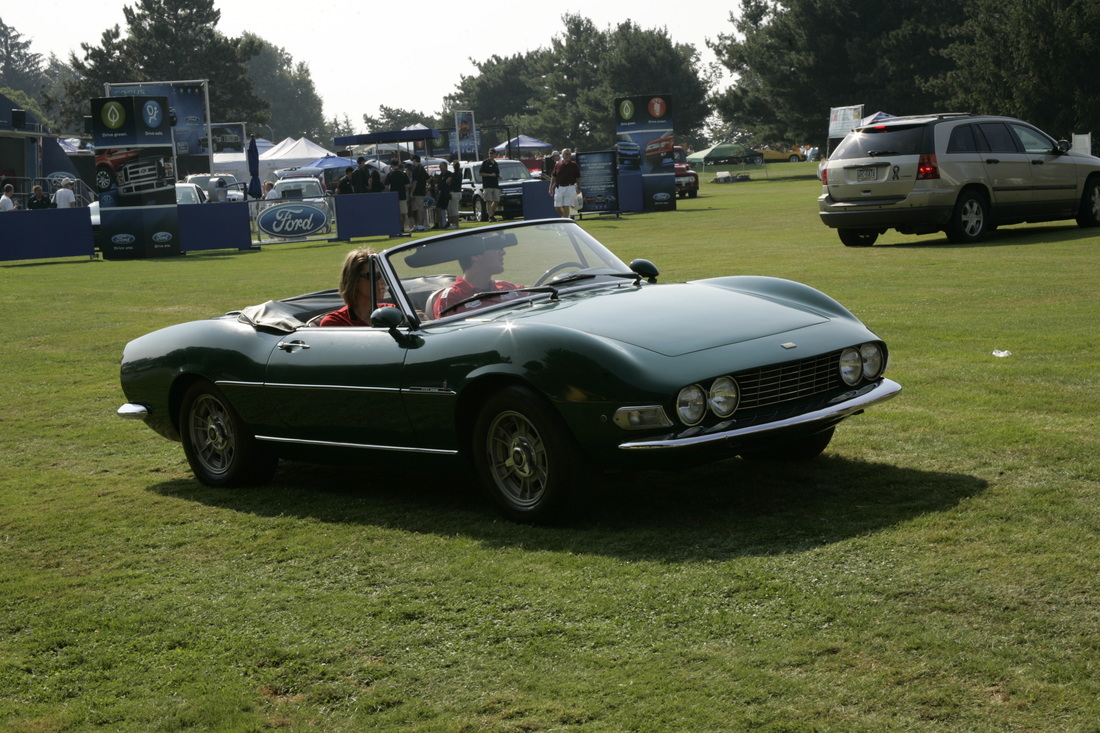
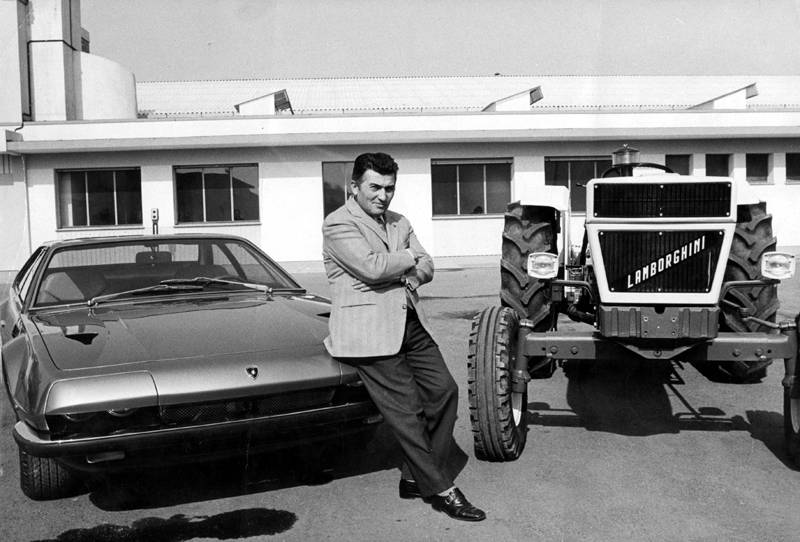
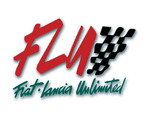
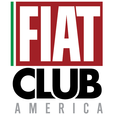

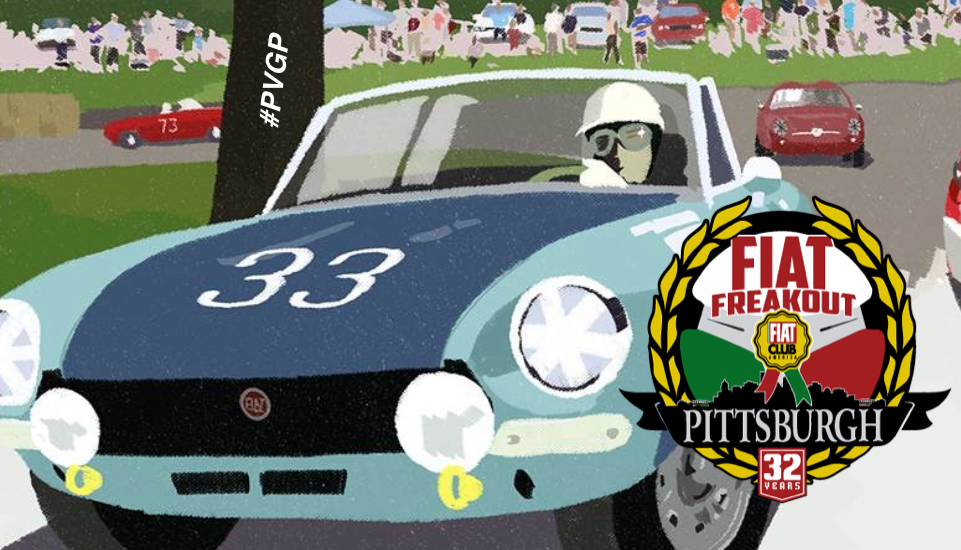
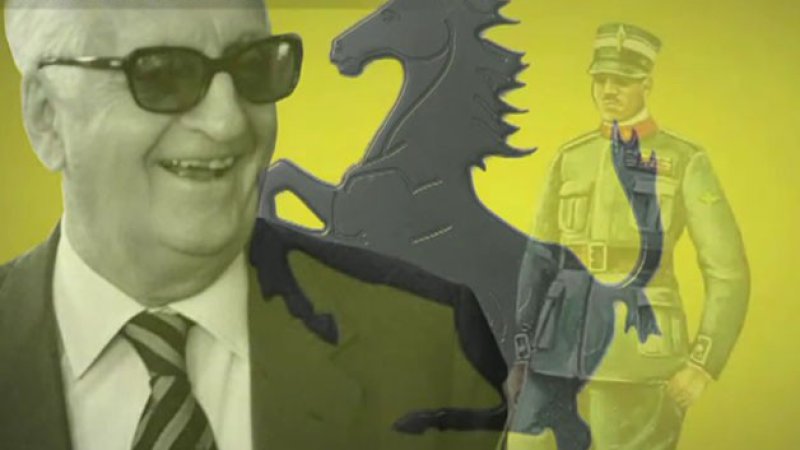
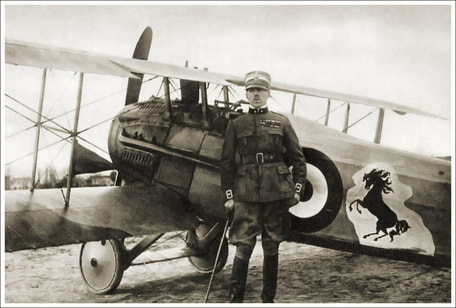
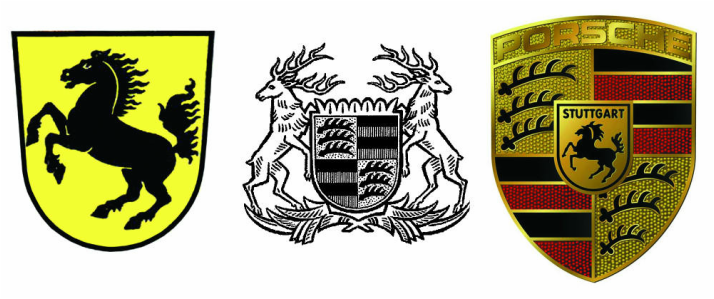
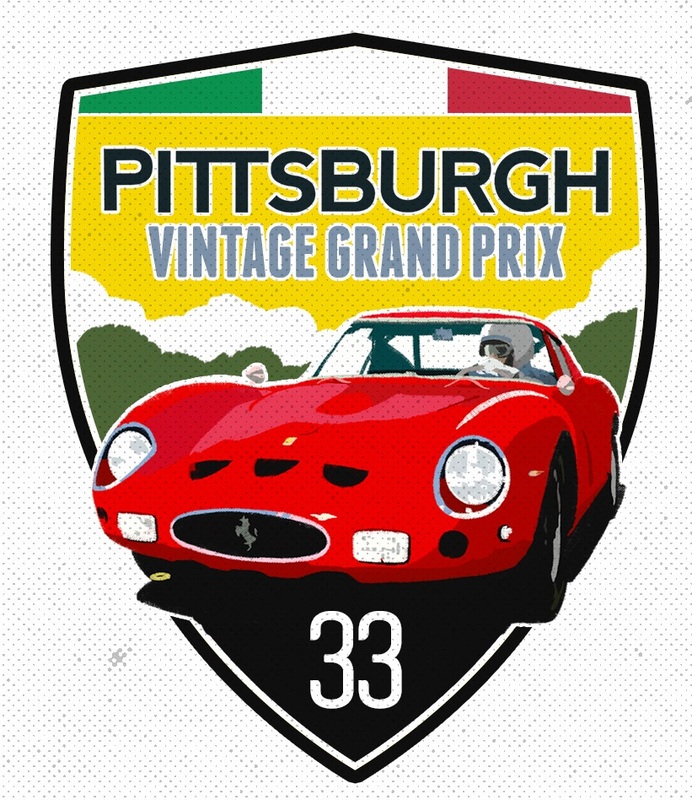
 RSS Feed
RSS Feed